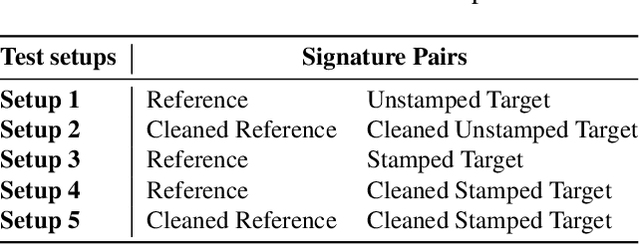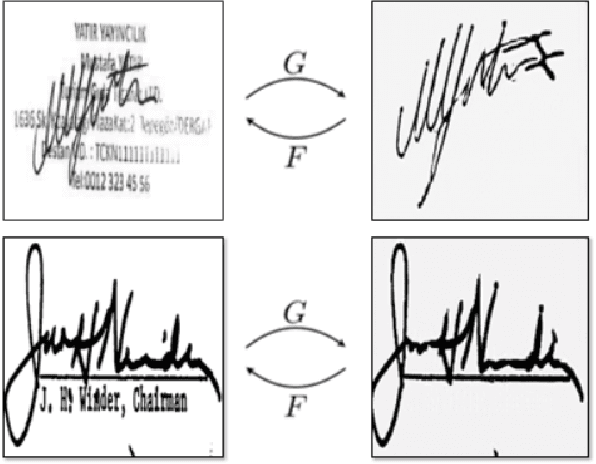Offline Signature Verification on Real-World Documents
Paper and Code
Apr 25, 2020



Research on offline signature verification has explored a large variety of methods on multiple signature datasets, which are collected under controlled conditions. However, these datasets may not fully reflect the characteristics of the signatures in some practical use cases. Real-world signatures extracted from the formal documents may contain different types of occlusions, for example, stamps, company seals, ruling lines, and signature boxes. Moreover, they may have very high intra-class variations, where even genuine signatures resemble forgeries. In this paper, we address a real-world writer independent offline signature verification problem, in which, a bank's customers' transaction request documents that contain their occluded signatures are compared with their clean reference signatures. Our proposed method consists of two main components, a stamp cleaning method based on CycleGAN and signature representation based on CNNs. We extensively evaluate different verification setups, fine-tuning strategies, and signature representation approaches to have a thorough analysis of the problem. Moreover, we conduct a human evaluation to show the challenging nature of the problem. We run experiments both on our custom dataset, as well as on the publicly available Tobacco-800 dataset. The experimental results validate the difficulty of offline signature verification on real-world documents. However, by employing the stamp cleaning process, we improve the signature verification performance significantly.
 Add to Chrome
Add to Chrome Add to Firefox
Add to Firefox Add to Edge
Add to Edge